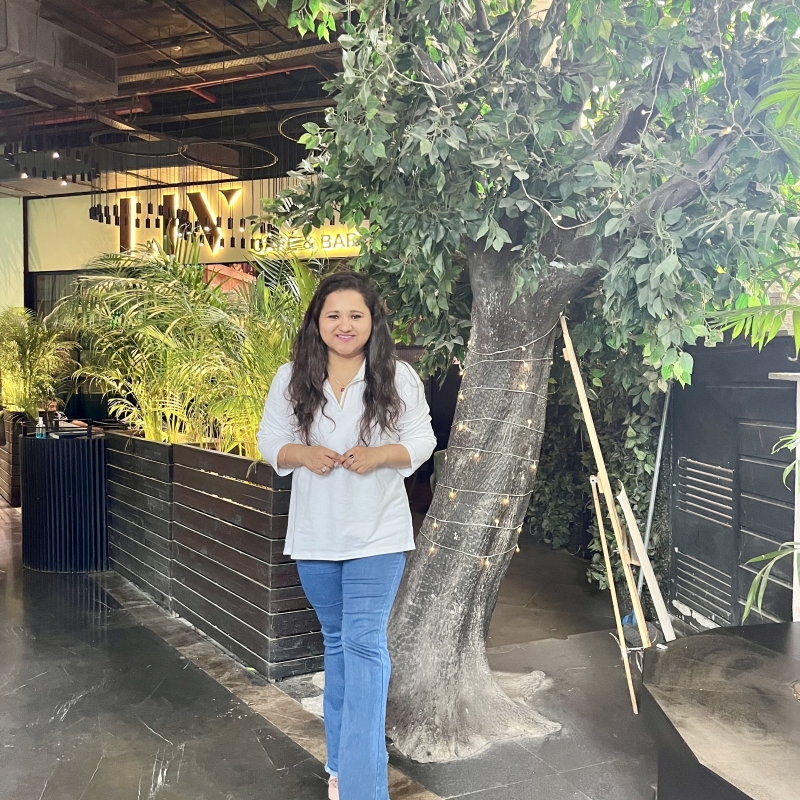Not that any job is easy. And public relations is no exception. As the monsoon showers and pothole season is underway, work can drag a bit.
We ask PR and comms pros what their top pet peeves are. While AI figures, talent and stakeholder challenges dominate the responses.
The never-ending approval loop
Nayani Bajpai, account manager, Newsmaker, says the top challenges at work are:
1. The never-ending approval loop
Sometimes, getting a press release approved is time-consuming. With so many stakeholders and opinions, by the time everyone’s happy, the news isn’t even news anymore. You start out excited about a great story, and end up just trying to get something out.
2. Explaining what we actually do
"Can you get us front-page coverage by tomorrow?"
We’ve all heard it. People often think PR is just about getting media coverage, but the real work is long-term reputation building. Explaining this to folks who expect instant results, especially when success can’t always be tied to numbers, is a constant uphill battle.
3. The ‘always on’ pressure
There’s no ‘off switch’ in PR. A crisis can hit anytime weekends, holidays, 2 AM. And when it does, you’re expected to jump in, stay calm, and fix things. It’s a job that looks glamorous from the outside, but behind the scenes, it takes a toll emotionally and mentally.
Focus on paid articles
Fatema Sakerwala is a partner at Eztablish Design , a niche PR firm that focuses on architects and designers. Her top issues are:
1. Untimely responses: "Imagine I have a really cool article in a newspaper that my client can benefit from, but the deadline is 2 days!! No way my client is sending me anything even close to coherent in 2 days, and I understand why. If you are hashing out which tile to use on the bathroom wall because the husband/wife or mother and daughter-in-law don't see eye to eye, you do have bigger fish to fry!
B. More focus on paid articles: The landscape of PR over the years has changed, and not necessarily for the better! 'Earned Media' was aspirational, but because it has diluted so much with paid media, there is no novelty/trust in a brand. Like I said, we are a niche firm that focuses on design, which comes from a branch of Art. One would expect platforms that promote such to be unbiased. Sadly, that's rarely the case now. The problem with this is that a lot of new and interesting talent and design goes unnoticed. Mediocre work gets promoted and changes the landscape further. Dilutes the progress of the profession and the industry. And so much more.
C. Dropping of articles after waiting for months: It’s so disheartening when a project or article is fully worked upon but gets dropped for unknown or undiscussed reasons after waiting for months, and sometimes more than a year! I hope there would be at least some communication and sooner in the process to save time and expectations."
We often spend more time justifying our work than doing the work itself.
Chhavi Sharma, brand strategist, points to the following pet peeves:
Cutting Through the Noise in an Oversaturated Media Landscape
- Securing earned media has become harder with shrinking newsrooms and fewer journalists covering more beats.
- The traditional press release is no longer enough; we need to think like content creators and strategists.
2. Proving ROI and Measuring What Truly Matters
- There is an increasing pressure to align PR efforts with business outcomes, which requires smarter analytics tools and better internal advocacy.
- We often spend more time justifying our work than doing the work itself.
3. Burnout, Bandwidth, and the Always-On Culture
- Many teams are lean, yet expected to deliver campaigns, crisis management, influencer engagement, and strategy all at once.
- Mental health is a growing concern in PR, and yet it is rarely spoken about.
- The industry glamorises the hustle but doesn’t often prioritise well-being, leading to high churn rates.
Clients or internal stakeholders often have high—and sometimes unrealistic—expectations
Phool Hasan, founder and managing director, Prime PR, like many in PR feels the top challenges are:
1. Managing Crisis Communication in a 24x7 News Cycle
In today’s hyper-connected world, news—especially bad news—travels fast. One of the most daunting challenges PR professionals face is managing crisis communication when an unexpected incident threatens the reputation of a client or organisation. Whether it’s a social media blunder, data breach, executive misconduct, or product recall, PR teams must respond quickly and accurately to control the narrative.
The pressure is intense.
2. Keeping Up with Digital Media Trends
The PR landscape is no longer limited to traditional media outlets. Digital platforms—social media, podcasts, influencer channels, blogs, and more—now play a critical role in shaping public perception.
PR professionals must constantly stay informed on emerging trends, algorithm changes, and new tools in digital marketing and communication.
3. Balancing Client Expectations with Reality
Clients or internal stakeholders often have high—and sometimes unrealistic—expectations about media coverage, campaign outcomes, or the speed at which results can be achieved.
Waning Interest among New Gen PR professionals
For Chandni J Dandia, account director, Priority Consultants, there is a big challenge with managing talent:
Decreased Respect for Time and Boundaries
Unlike earlier times, stakeholders increasingly respond at their convenience. This lack of regard for timely communication can disrupt workflow, hinder decision-making, and create avoidable delays in campaign execution.
Waning Interest Among Newer Generations
One clear shift is a decline in sense of ownership among some newer-gen PR professionals. There is often a focus on simply “getting the job done,” rather than ensuring quality and alignment with broader team goals. As a team leader, bridging this generational gap to foster accountability has become a key challenge.
Decline in Attention to Detail and Professional Rigour
A noticeable trend in recent years is a more casual approach to deliverables. Work is submitted without thorough proofreading or attention to detail.
This can undermine the credibility of output shared with clients and media and often necessitates more time for reviews and corrections.
Young PR professionals are using AI to prepare media briefing documents for CEOs!
Khushboo Alag, senior account manager, Nucleus PR, faces the following challenges at work:
- AI: Young PR professionals are using the tools as a powerful ally. Not only are AI tools being used to craft press releases and social media posts, but also prepare media briefing documents for CEOs!
- PR pros need to understand how to use AI as a co-pilot, not replacing human touch and communication.
- New Skills: A PR professional in 2025 is expected to be skilled in social media storytelling, along with traditional PR skill sets. The narratives created on LinkedIn, Twitter, and Instagram for a brand/spokesperson need as much strategic thought from a PR professional as any media pitch. Yet, many professionals still lack proficiency in multimedia storytelling, SEO, and data analytics.
- It's time agencies help upskill their PR teams with tools and training in content creation, digital metrics, and platform optimisation to stay relevant.
- Reaching new audiences: Winning over Gen Z and Gen Alpha with traditional PR is not easy. The new generations are always looking for unfiltered, quirky communication with shorter attention spans. Traditional media and most digital platforms do not excite them. PR pros need to craft brand narratives for Gen Z by understanding their language, values, and cultural references.
Clients and C-suites want hard numbers—and fast.
Shiv Rajvanshi, PR expert, says the top PR struggles at work are:
1. Breaking Through the Clutter in a Noisy Media Landscape
The Challenge:
In an era where everyone has a platform, standing out with a story that truly captures attention is tougher than ever. Journalists are flooded with hundreds of pitches daily, and the real challenge is making yours impossible to ignore.
2. Managing Reputation in Real-Time Crisis Cycles
The Challenge:
One tweet. One viral video. That’s all it takes to spark a reputational wildfire. With cancel culture, brand activism, and 24/7 social scrutiny, PR pros are constantly on edge.
The Insight:
Crisis communication is no longer reactive—it’s predictive. PR professionals must be crisis-prepared before the storm hits, armed with playbooks that balance authenticity, speed, and transparency.
3. Proving PR's ROI in a Metrics-Obsessed World
The Challenge:
While advertising has clear KPIs, PR often battles the "invisible value" narrative. Clients and C-suites want hard numbers—and fast.
The Insight:
Today’s PR professionals must become part analyst, part storyteller—using tools like media monitoring, sentiment analysis, and digital attribution models to prove that PR isn’t just a support function—it’s a growth engine.
The right pitch at the wrong time? Lost. The right pitch in the wrong format? Ignored.
Aditya Saxena, senior account executive at Avance PR, points to the following PR challenges:
The right pitch at the wrong time? Lost. The right pitch in the wrong format? Ignored.
In an era where everyone is a content creator and the news cycle changes by the hour, standing out is no longer about just having a good story; it's about how you tell it. Crafting narratives that are not only newsworthy but also emotionally resonant is a daily challenge.
2. Balancing Speed with Strategy
We live in the age of “instant everything.”
Whether it’s a client crisis or a viral trend we need to ride, PR demands speed. But that speed must be rooted in strategy. It’s a fine line to act too fast and risk being tone-deaf, or act too slow and miss the window. Managing that balance is a constant mental workout.
3. Educating Clients About PR’s True Value
PR isn’t advertising, and it’s not magic either.
One of the biggest internal challenges is aligning client expectations with PR realities. Building relationships, credibility, and trust takes time. The real ROI of PR is often subtle but long-lasting, and helping clients understand that impact is an ongoing conversation.
Shifting the role of Public Relations dangerously close to "AI Relations".
Suvidha Awle, head BFSI, Weber Shandwick, India points to the following challenges:
Human intelligence vs AI: where’s the line?
Let’s face it, AI tools are incredibly helpful. But somewhere along the way, we have started letting them lead the way rather than support us. There’s a growing habit of copying, pasting, and calling it a day, without pausing to apply our judgment or creativity. This overdependence is making communication feel overly mechanised, shifting the role of Public Relations dangerously close to "AI Relations.
When agencies are treated like vendors, not partners
This one’s been around forever, but it still stings. PR agencies often put in serious effort to understand the brand, shape ideas, and offer strategic thinking. But too often, that’s sidelined in favor of a “just get me coverage” mindset.
Marketing and social metrics have taken center stage, and PR is seen as a visibility tool, not a driver of reputation, credibility, or trust. The focus on short-term wins can really limit what PR is capable of. We need to bring the conversation back to impact, not just output.
Expected to pitch great stories… without the real story
One of the biggest frustrations agencies face is being asked to come up with strong story ideas without being given the real meat of the story. We’re expected to pull ideas out of thin air, while the data, case studies, and deeper insights sit with business leaders or internal teams.
Yes, we read, research, and do our homework. We stay close to the news and understand the context. But the best stories happen when we’re brought into the fold early, when there’s open collaboration and access to the full picture.
Aligning client expectations with PR realities
Husain Sayyed, founder & CTO of Veroma Media, " One of the most common hurdles is the widespread misconception about what PR entails.
Many clients expect instant results or view PR as a quick publicity fix.
Successfully aligning client expectations with PR realities requires both patience and experience. Many clients are hesitant to commit to planned, ongoing PR campaigns and may prefer one-off projects."
And then there are so many more challenges.
For Tripti Sharma, senior account executive at Adgcraft Communications, one of the core issues is, "When a ‘Yes’ Isn’t Really a Yes." One of the most frustrating parts of our job, when a journalist agrees to a story or interview, but later becomes unresponsive. Calls go unanswered, messages are ignored, and you're left in limbo with the client following up relentlessly."
Shivasree Venkateswaran, comms specialist, points to "Managing tight deadlines while balancing the needs of both clients and journalists, last-minute changes and urgent requests are part of the daily routine. On top of that, aligning client expectations with realistic outcomes, especially when it comes to earned media versus paid visibility, is an ongoing task that requires clear communication and education."
Shringesh Vyas, VP & head – analytics, Concept BIU, concerns are, "Data accuracy. PR is not confined to online and social platforms; it spans a much wider spectrum. For strategies to succeed, the foundation must be reliable and accurate data."
Vyas adds, "As the economy expands into Tier 3 and Tier 4 cities, PR must follow suit. Unlike advertising, PR continues to face challenges in budgets and regional outreach. From on-ground activities to measurement and evaluation, cost remains a critical barrier."
Varsha Jha, assistant VP, IB Group, key challenges, working as she does in the challenging agro sector, are, "Agro is a sector that directly impacts food security and rural livelihood. But, making agro stories relevant to urban-focused media: It’s tough to get coverage for agricultural topics in mainstream media, so we must craft human-centred stories that bridge the urban-rural divide. A sector that directly impacts food security and rural livelihood
Because agriculture is so closely tied to natural cycles and external factors like weather or disease outbreaks (Avian Influenza/ Bird Flu), the pace can be unpredictable.
During the crisis/flu scare, we have to work around the clock to provide accurate updates, reassure stakeholders, and protect the company’s reputation. It’s intense, but knowing your work supports food security and farmers makes it worthwhile."
Liji Jacob has to deal with, as she puts it, "Navigating conversations with journalists with a ‘holier-than-thou’ attitude can be difficult. Mutual respect and collaboration go a long way, but unfortunately, that’s not always the case."
Working with clients who are unclear about what they want from PR can be especially challenging. A lack of clarity or direction leads to wasted time and diluted efforts.
Puja Kumari, SAE, Adfactors PR, says, "One of the top challenges PR professionals face is managing unrealistic expectations, whether from clients or leadership, around media coverage and brand visibility. There’s often a misunderstanding of how earned media works and the time it takes to build meaningful narratives."
Shruti Mishra, founder and CEO, IImage Stereo Marcom Pvt. Ltd shares, " There is a growing, thinner line between editorial content and influencer collaborations. Every brand, irrespective of its sector and domain, wants to work with influencers and expects ROI out of it. Most people don’t even understand the working of an influencer, but want them to be engaged for the brand because that’s the trend! The actual work of PR professionals was to get organic outputs from the intellectually sound journalistic mindsets, wherein today it is becoming limited to sugar talking with influencers, fulfilling their fancies, striking a barter deal and getting the desired outcome based on the decided deliverables!"
Riddhi Sharma, lead - PR and integrated communications, Jajabor Brand Consultancy, mentions the challenge of "Balancing the drive for creative, breakthrough work with the fast pace of the industry. Secondly, while we recognise the value of empathy in our storytelling, it is equally important to foster empathy within our teams. The constant demand to perform can be demanding."
Surabhi Kumar, Freelance PR professional, says, "Building relationships with senior journalists has become tougher. While many are approachable, some remain distant—often due to excessive, irrelevant pitches and calls they receive. A polite ‘no’ or feedback from their side would go a long way in bridging this gap."
Vidhi Sharma, senior account executive, "As a PR professional with years of hands-on experience, I’ve observed that the top challenge we consistently face is crafting and pitching the right story at the right time to the right platform – This is both an art and a strategy."
Yashika Arora, PR lead, Mrig Sight Media, says, "Beyond managing media crises, building narratives, and keeping pace with the 24/7 news cycle, many face high levels of stress due to constant deadlines, client expectations, and reputation risks. Despite the pressure, compensation often doesn’t match the intensity or hours invested, especially in entry-level roles. Another concern is the lack of structured mentoring and professional training, which leaves young professionals to navigate complex communication dynamics without sufficient guidance."
Anjali Hegde, Neo Aeon Media Solutions PR, says her biggest challenge is, "Organic vs. Paid PR Expectations. When I started in PR (7 years back), most coverage came from building strong media relationships and pitching stories that made sense. Now, a large part of the industry has shifted towards paid placements, and while that’s understandable from a business point of view, explaining this shift to clients is not always easy.
Many clients feel that if they’ve hired a PR agency, everything should come organically. We often find ourselves stuck between managing client expectations and the reality of how media now works. There’s a lot of back and forth, and honestly, sometimes just convincing a client why a certain story is worth investing in becomes a whole project in itself."
Ojashwi Singh, PR professional, shares, " There’s a common belief that PR is simply an alternative to advertising—and that it should only be activated ahead of major product launches or events to 'make noise.” This is a misconception."
Dr Ramu, journalist and past chairman of Hyderabad chapter of Public Relations Society of India (PRSI), concisely puts it, "Management's misunderstanding of PR, lack of sufficient staff, lack of proper budget.
Durgesh Tripathi, DGM-Marketing & Communication, Signature Global, concludes with, "In today’s hyperconnected world, the biggest challenge for PR professionals is staying human in a digital-first era. As communicators, our role is evolving from message carriers to meaning creators—crafting narratives that don’t just inform, but influence and inspire."
If you enjoyed this article, you can subscribe for free to our weekly event and subscriber alerts.
We have four email alerts in total - covering ESG, PR news, events and awards. Enter your email address below to find out more:













